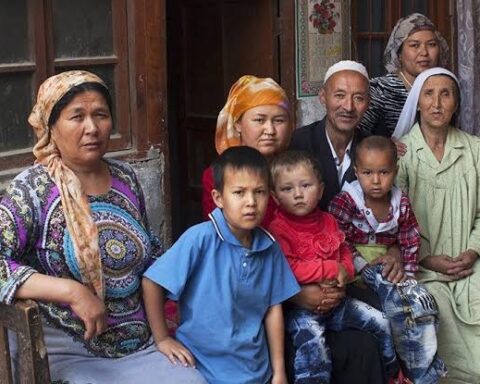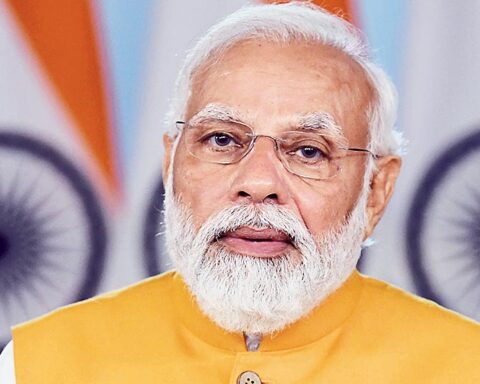UNEMPLOYMENT & INDIA’S POSITION
Unemployment is a persistent global issue that initiates its adverse effects on individuals, bring economic stress to families and then penetrate it into the entire economies. Unemployment can be defined as a state of being idle or unproductive despite being able, in continuous search & ready to work. According to organization for Economic Cooperation & Development (OECD), the unemployed are persons of working age who are without work, are available for work, and have taken specific steps to find work.
The challenge of unemployment is faced by both developed & developing nations alike; however, the severity of the problem is more persistent in the latter. India is a developing nation and now the most populous country of world with population of 1.428 billion, surpassing china, according to UN data released in April 2023.
India is a developing country and the nature of unemployment obviously defers from that of advanced economies which according to Keynes is because of deficiency in effective demand. In India, like other developing nations, the prevalence of chronic under unemployment or disguised unemployment mostly in the rural areas and educated unemployment largely in urban areas is the major issue. The developed nations are tackling the problem of maintaining the effective demand in Keynesian sense as against the developing nations where shortage of capital equipment & other supplementary resources result in unemployment.
The Labour statistics in India has traditionally been collected, compiled & disseminated by Labour Bureau in the Ministry of Labour & Employment (MLE). National Sampling Survey Office collects information on certain key parameters of employment and unemployment in its surveys. NSSO releases the unemployment data once every 5 years. There was no NSSO survey between 2012 and 2017 & a new survey was initiated in 2017-18. However this survey report has not been officially released by Govt. but the report was leaked by media & according to Business Today, the 2017-18 Usual Status unemployment rate in India stood at 6.1%, a Four Decade high, possibly due to the Demonetization of 2016.
DEMOGRAPHIC DIVIDEND & INDIA
The demographic potential of India is high on account of its large demographic dividend, if utilized fully. India has 62.5% of its population in age group of 15-59 years which is ever increasing and will be at the peak around 2036 when it will reach approximately 65%. In 2020 the median age in India was just 28, compared to 37 in China & US, 45 in Europe & 49 in Japan. India thus has one of the youngest population in an aging world. By 2023 the median age in India is 28.2 years which is projected to increase to 31.7 years by 2030.
India’s neighbor China has effectively utilized the demographic potential & turned that into demographic dividend as the labour force participation rate of youth was around 80% from 1981 to 2010 that helped it to achieve an average growth rate of 9.3 during that phase. India in relation to China is lagging behind; the labour force participation rate of India is relatively low & on further decline. It has less than average of youth labour force participation rate in Asia & World despite having a largest demographic potential. The recent Bloom Berg report that references data from the Centre for Monitoring Indian Economy (CMIE) showed the overall unemployment rate in India 7.95% as of July 2023. Passing through the stage of Demographic Dividend and witnessing of alarming unemployment rates, that too the educational unemployment should be the greatest concern for the Indian policy framers.
ADVANTAGE OF DEMOGRAPHIC DIVIDEND
The major benefit that we can have from the demographic dividend is the better economic growth through increasing the rate of working labour force participation, increase in fiscal space, rise in women’s workforce, increase in saving rate etc. Japan was among the first major economies to experience rapid economic growth because of changing population structure. Its demographic dividend phase lasted from 1964 to 2004.
Demographic Dividend has largely contributed to the rise in Industrialization & Urbanization. The working population strives better for employment opportunities and other facilities, they find the urban areas with greater opportunities access to the labour market, better education, fair living conditions, better transportation etc. They shift from the areas lacking such facilities, usually the rural areas & hence contribute to the process of urbanization. Young innovative minds approach better to the economic conditions & always strive to work in advanced fields rather being concentrated in the age-old practices. Aiming at reducing the costs and increasing the productivity the industrialization was conceptualized. While earning their livelihood, they help the economy in the advancement of above said socio-economic processes to flourish, which help in trickling down the economic benefits in economy, and thus build a virtuous cycle.
The demographic dividend results in the rise in workforce which results in wage enhancements and the rise in demand, this process smoothens the economic cycle. The employment outlook in India for 2023 is generally positive, with growth expected in several sectors. The IT and ITES sectors are expected to continue to be the major drivers of job growth, with other sectors such as manufacturing, healthcare, and retail also seeing strong demand for talent.
Skilled and healthy workforce reduces excessive public spending on health and helps in greater capital creation. The nation can divert its resources in the development of other productive sectors like education which will further increase the labour productivity & consequently the national income.
The advantages of demographic dividend if reaped can take the a country on heights, from a developing nation to a developed nation, from a low level income to a high level income & from a less welfare nation to welfare state . It is thus the need of hour that people at helm of affairs to formulate such policies that can give the best possible outcome to more importantly the nation enjoying the demographic dividend.
CHALLENGES ASSOCIATED WITH INDIAN DEMOGRAPHIC DIVIDEND
Asymmetric Demography
The growth in the working age ratio is usually a good sign for the economy but it’s concentration in some of India’s poorest states is a cause of concern for the policy framers. The latest data (August 2023)of Centre For Monitoring The Indian Economy (CMIE) shows that higher unemployment rates are concentrated in states like Haryana (37.3%), Jammu & Kashmir (32.8%) Rajasthan(31.4%) & Jharkhand (17.3%). These states are usually poor, backward & with large populations and tackling such issues first can only help in the realization of demographic dividend by creating gainful employment opportunities for this working age population.
Low Human capital Formation
Possessing of personal attributes like knowledge, skills, good-health, & education is referred to as formation of human capital. Indian Budget 2023 allocated ₹89,155 corers which is 3.43% higher than previous outlay of 86,200.65 corers of to health while as the share of Education was 2.9% of GDP ($112 Billion). The main issue associated with Indian health policy is the insufficient investment in public health in comparison to other countries and the ineffective primary health care system. The Education in India is mainly state sponsored as the approximate ratio of public to private schools in India is 10:3. The quality of public education delivery is questioned when the dismal performance is shown in the various indices.
The Human Development Index 2021 ranked India 132nd among 191 countries, earlier in 2020 index India had ranked 131 amongst 189 countries. The decline is attributed to the fall in life expectancy of India. The HDI is based on four indicators—life expectancy at birth, mean years of schooling, expected years of schooling & gross national income (GNI) per capita. The Physical Quality Of Life Index (PQLI) 2020 ranked India 117 out of 189 countries. Thus the dismal performance of India in various world reputed indices is because of its low performing human capital parameters & addressing them at earliest is much needed to transform the demographic potential into demographic dividend.
Jobless Growth
There is mounting concern that future growth could be largely jobless in India as the continuous growth with simultaneous decreasing levels of employment seems now a norm. Every 1 among 5 young people in the world belongs to India and it is good sign of engine propelling forward but the continuous rising unemployment rates make Indian youth hardest to find a job in such economic conditions. The educated youth have been hitted hardest, on the one hand they deem themselves overqualified to get manual labour job & on the other hand they lack the necessary skills to get absorbed in highly paid professional jobs. The state being the largest absorber of educational unemployment had dismayed them as between 2021 & 2022, as many as 18.7 million people applied for the central jobs but only 38,850 were hired thus a success rate of mere 0.2%.








